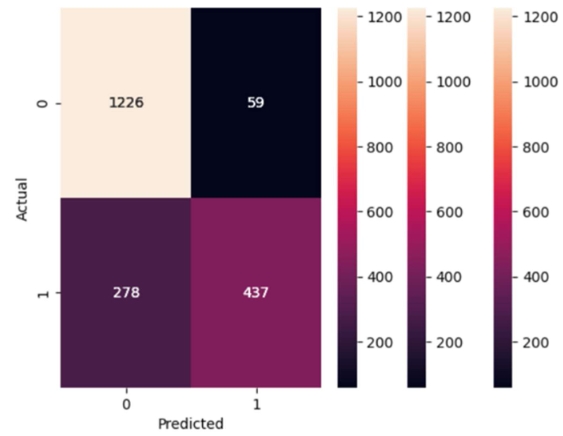Can CLIL give Italian high school students in the private sector a greater opportunity to develop their EFL speaking skills?
Abstract
The purpose of this paper is to investigate whether CLIL (Content and Language Integrated Learning) can lead Italian high school students to improve their English as a Foreign Language speaking skills. The trigger for this research comes from my EFL teaching experiences at Italian schools, where the syllabi employed tend to neglect the training of speaking skills and focus mainly on grammar translation and English literature instructions. The stimulus for this investigation comes also from articles on the effectiveness of using CLIL for the improvement of FL speaking performance and Lexis extension that I read before writing this article in order to have a broader view of this topic. The literature review describes in detail theoretical issues with regard to the advantages of using CLIL methodology in the classroom over traditional approaches and how this technique helps FL students to facilitate speaking difficulties. It also makes reference to a few key findings from previous research. This study was conducted in Italy, and the data gathering processes consist mainly of qualitative, semi-structured interviews with five participants (three EFL learners and two experienced teachers of English as a foreign language), interview transcripts, and content analysis techniques that I used to examine and interpret the collected data. Findings indicate that not only can content and language integrated learning represent an improvement of the common EFL teaching methods and help learners enhance their speaking abilities, but it can also stimulate their motivation to study English and lower learners’ levels of anxiety, which is commonly associated with their concern about making mistakes or being assessed.
References
[1]Willis J. A Framework for Task-Based Learning. Longman; 1996.
[2]Coury G, Carlos S. English as a Lingua Franca in the Brazilian Academic World. Karen’s Linguistics Issues; 2001.
[3]Pashaie P, Khalaji H. Does open task outcome affect speaking skills of pre-intermediate high school students? (A study in Malayer, Iran). International Journal of Educational Investigations. 2014; 1(1): 54–65.
[4]Richards JC. Key Issues in Language Teaching. Cambridge University Press; 2015.
[5]Lopriore L, Djigunovic’ JM. Attitudinal Aspects of Early EFL Learning. UPRT; 2009.
[6]Costa F. ICLHE Italy: State of the Art. Multilingualism, CLIL and teaching innovation. Bozen University Press; 2013. pp. 107–121.
[7]Bohlke D. Fluency-oriented Second Language Teaching. In: Celce-Murcia M, Brinton D, Snow MA. (editors). Teaching English as a Second or Foreign Language, 4th ed. Heinle; 2013. pp. 121–135.
[8]Mishan F, Timmis I. Materials Development for TESOL. Edinburgh University Press; 2015. doi: 10.1515/9780748691371
[9]Richars JC, Rodgers TS. Approaches and Methods in Language Teaching, 2nd ed. Cambridge University Press; 2001.
[10]Wedell M. More than just ‘technology’: English language teaching initiatives as complex educational changes. In: Coleman H (editor). Dreams and Realities: Developing COUNTRIES and the English Language. British Council; 2011.
[11]Lange’ G, Cinganotto L. E-CLIL for an innovative instruction. The notebooks of the Research n.18, Loescher. Available online: http://www.laricerca.loescher.it/quaderno_18/#/4/ (accessed on 15 December 2022).
[12]Nunan D. Second Language Teaching and Learning. Heinle & Heinle Publishers; 1999.
[13]Burkart G, Sheppard K. Content ESL across the USA: A training packet. A descriptive study of content-ESL practices. National clearinghouse for English language acquisition. Available online: http://www.ncela.gwu.edu/pubs/cal/contentesl/ (accessed on 15 December 2022).
[14]Florez MAC. Improving Adult English Language Learners’ Speaking Skills. National Center for ESL Literacy Education; 1999.
[15]Fattah Torky SA. The Effectiveness of a Task-Based Instruction Program in Developing the English Language Speaking Skills of Secondary Stage Students. Ain Shams University Women’s College. Curricula and Methods of Teaching Department; 2006.
[16]Pratiwi ZF, Ayu M. The use of describing picture strategy to improve secondary students’ speaking skill. Journal of English Language Teaching and Learning. 2020; 1(2): 38–43. doi: 10.33365/jeltl.v1i2.603
[17]Rivers WM. Teaching Foreign Language Skills, 2nd ed. Chicago University Press; 1981. doi: 10.7208/chicago/9780226518855.001.0001
[18]Oprandy R. Listening/speaking in second and foreign language teaching. System. 1994, 22(2): 153-175. doi: 10.1016/0346-251x(94)90054-x
[19]Duguid A. Italian speakers. In: Swan M, Smith B (editors). Learner English: A Teacher’s Guide to Interference and Other Problems. Cambridge University Press; 2001. pp. 73-89. doi: 10.1017/cbo9780511667121.007
[20]Bygate M. Speaking. In: Carter R, Nunan D (editors). The Cambridge Guide to Teaching English to Speakers of Other Languages. Cambridge University Press; 2001. pp. 14-20. doi: 10.1017/cbo9780511667206.003
[21]Nation P, Newton J. Teaching ESL/EFL Listening and Speaking. Routledge; 2008. doi: 10.4324/9780203891704
[22]Celce-murcia M, Brinton D, Snow MA. Teaching English as A Second or Foreign Language, 4th ed. Heinle; 2014.
[23]Mackey A. Input, interaction, and second language development. Studies in Second Language Acquisition. 1999, 21(4): 557-587. doi: 10.1017/s0272263199004027
[24]Hilferty A. The Relationship between Reading and Speaking Skills. Focus on Basics; 2005.
[25]Farabi M, Hassanvard S, Gorjian B. Using guided oral presentation in teaching English language learners’ speaking skills. Journal of Applied Linguistics and Language Learning. 2017; 3(1): 17–24.
[26]Mehisto P, Frigols MJ, Marsh D. Uncovering CLIL: Content and Language Integrated Learning and Multilingual Education. Macmillan; 2008.
[27]Piacentini V, Simões AR. CLIL: A way to develop plurilingual and intercultural competences in schools? In: Anastassiou F, Andreou G (editors). English as a Foreign Language: Perspectives on Teaching, Multilingualism and Interculturalism. Cambridge Scholars Publishing; 2020.
[28]Šulistová J. The Content and Language Integrated Learning Approach in Use. Acta Technologica Dubnicae. 2013, 3(2): 47-54. doi: 10.1515/atd-2015-0018
[29]Dalton-Puffer C. Discourse in Content and Language Integrated Learning (CLIL) Classrooms. Language Learning & Language Teaching. John Benjamins; 2007. doi: 10.1075/lllt.20
[30]Brumfit CJ, Johnoson K. The Communicative Approach to Language Teaching. Oxford University Press; 1979.
[31]Hughes SP, Madrid D. The effects of CLIL on content knowledge in monolingual contexts. The Language Learning Journal. 2019, 48(1): 48-59. doi: 10.1080/09571736.2019.1671483
[32]Marsh D. CLIL/EMILE—The European dimension: Actions, Trends and Foresight Potential. European Commission, DG EAC; 2002.
[33]Piacentini V, Simões AR, Vieira RM. Teachers’ view of language(s) in (CLIL) science education: A case study in Portugal. Problems of Education in the 21st Century. 2019; 77(5): 636–649. doi: 10.33225/pec/19.77.636
[34]Genesee F, Hamayan E. CLIL in Context. Cambridge University Press; 2016.
[35]Bruton A. CLIL: Some of the reasons why … and why not. System. 2013, 41(3): 587-597. doi: 10.1016/j.system.2013.07.001
[36]Villabona N, Cenoz J. The integration of content and language in CLIL: a challenge for content-driven and language-driven teachers. Language, Culture and Curriculum. 2021, 35(1): 36-50. doi: 10.1080/07908318.2021.1910703
[37]Civinini C. Digital EL Gazette. Behind the news at Italian schools. Available online: https://www.cebs.at/fileadmin/user_upload/service/CLIL/clil_research_italian_model_230516_ab_01.pdf (accessed on 15 December 2022).
[38]MIUR. National guidelines for high schools. Available online: http://nuovilicei.indire.it/content/index.php?action=lettura&id_m=7782&id_cnt=10497 (accessed on 15 December 2022).
[39]Cinganotto L. CLIL in Italy: a general overview. Latin American Journal of Content & Language Integrated Learning. 2016; 9(2): 374-400. doi: 10.5294/laclil.2016.9.2.6
[40]Valdés-Sánchez L, Espinet M. Coteaching in a science-CLIL classroom: changes in discursive interaction as evidence of an English teacher’s science-CLIL professional identity development. International Journal of Science Education. 2020; 42(14): 2426-2452. doi: 10.1080/09500693.2019.1710873
[41]Dalton-Puffer C. Content-and-Language Integrated Learning: From Practice to Principles? Annual Review of Applied Linguistics. 2011; 31: 182-204. doi: 10.1017/s0267190511000092
[42]Coyle D, Hood P, Marsh D. CLIL: Content and Language Integrated Learning, Cambridge, England. Cambridge University Press; 2010.
[43]Banegas DL. Putting CLIL into practice. International Journal of Bilingual Education and Bilingualism. 2018; 21: 2, 265–268. doi: 10.1080/13670050.2016.1146425
[44]Di Martino E, Di Sabato B. CLIL implementation in Italian schools: can the long ago employed teacher be trained effectively? The Italian protagonists’ voice. Latin American Journal of Content and Language Integrated Learning. 2012; 5(2): 73-105. doi: 10.5294/laclil.2012.5.2.9
[45]Marsh D, Mehisto P, Wolff D, Frigols-martin MJ. European Framework for CLIL Teacher Education. European Centre for modern Languages; 2011.
[46]Walker A, White G. Technology Enhanced Language Learning. Oxford University Press; 2014.
[47]Stanley G. Language Learning with Technology: Ideas for Integrating Technology in the Language Classroom. Cambridge University Press; 2013.
[48]Hedge T. Teaching and Learning in the Language Classroom. Oxford University Press; 2000.
[49]Meddings L, Thornbury S. Teaching Unplugged: Dogme in English Language Teaching. Delta; 2009.
[50]Macalister J, Nation ISP. Language Curriculum Design. Routledge; 2009. doi: 10.4324/9780203870730
Copyright (c) 2024 Federico Valente

This work is licensed under a Creative Commons Attribution 4.0 International License.









